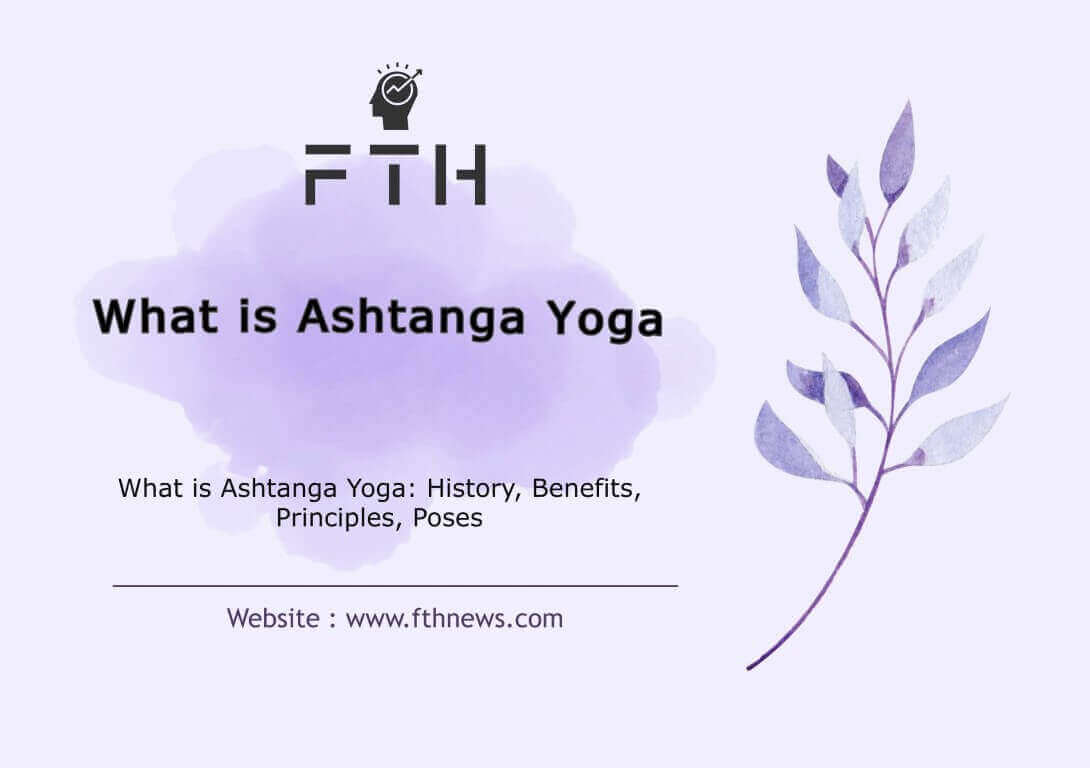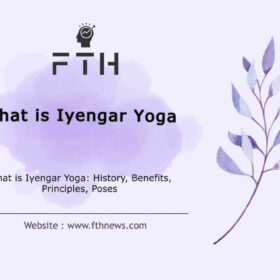
In the vast landscape of yoga, one tradition stands out for its depth, discipline, and transformative power: Ashtanga Yoga. Rooted in ancient wisdom and revered by practitioners worldwide, Ashtanga Yoga offers a comprehensive path to holistic well-being. In this comprehensive guide, we delve into the essence of Ashtanga Yoga, exploring its history, principles, and practices, to provide you with a deeper understanding of this sacred tradition.
What is Ashtanga Yoga?
At its essence, Ashtanga Yoga is far more than a mere physical exercise—it’s a profound journey of self-discovery and spiritual awakening. Rooted in ancient wisdom and refined through centuries of practice, Ashtanga Yoga offers a comprehensive path to holistic well-being, encompassing the entirety of human existence—body, mind, and spirit.
Derived from the Sanskrit words “ashta” (eight) and “anga” (limb), Ashtanga Yoga is named for the eightfold path delineated in the Yoga Sutras of Patanjali, an ancient text revered as the foundational scripture of yoga philosophy. This holistic system guides practitioners on a transformative journey towards self-realization and union with the divine.
History of Ashtanga Yoga:
Ashtanga Yoga has deep roots in ancient India, dating back thousands of years to the sage Patanjali’s Yoga Sutras. However, it gained prominence in the 20th century thanks to Sri K. Pattabhi Jois. Under his guru Sri T. Krishnamacharya’s guidance, Jois developed and popularized the Ashtanga Yoga system. Establishing the Ashtanga Yoga Research Institute in Mysore, India, Jois spread the practice worldwide. Today, his legacy lives on as Ashtanga Yoga continues to inspire practitioners globally.
The Eight Limbs of Ashtanga Yoga:
- Yamas (Ethical Principles): The first limb of Ashtanga Yoga encompasses moral precepts that govern our interactions with the external world, including principles of non-violence, truthfulness, non-stealing, non-excess, and non-possessiveness.
- Niyamas (Personal Observances): The second limb focuses on personal disciplines and practices that cultivate inner harmony and spiritual growth, such as cleanliness, contentment, self-discipline, self-study, and surrender to the divine.
- Asanas (Physical Postures): Asanas form the third limb of Ashtanga Yoga, encompassing a dynamic sequence of postures designed to purify and strengthen the physical body, enhance flexibility, and promote overall well-being.
- Pranayama (Breath Control): The fourth limb emphasizes conscious control of the breath, facilitating the regulation of life force energy (prana) and fostering a deeper connection between body and mind.
- Pratyahara (Withdrawal of the Senses): Pratyahara, the fifth limb, involves turning the senses inward, away from external distractions, and cultivating inner awareness and introspection.
- Dharana (Concentration): Dharana, the sixth limb, entails cultivating focused attention and concentration on a single point or object, training the mind to remain steady and undistracted.
- Dhyana (Meditation): Dhyana, the seventh limb, is the practice of sustained meditation, wherein the practitioner experiences a state of profound inner absorption and union with the object of meditation.
- Samadhi (Union with the Divine): The eighth and final limb represents the pinnacle of the yogic journey, wherein the practitioner experiences a state of complete absorption and oneness with the divine, transcending the limitations of the ego and individual self.
Benefits Ashtanga Yoga
Ashtanga Yoga offers a wide range of benefits that encompass physical, mental, and spiritual well-being. Here are some of the key benefits:
Physical Fitness:
Ashtanga Yoga is a dynamic and physically demanding practice that builds strength, flexibility, and stamina. Through the practice of challenging asanas (postures) and vinyasa (breath-synchronized movement), practitioners develop lean muscle mass, improve joint mobility, and enhance overall physical fitness.
Stress Reduction:
The rhythmic flow of breath and movement in Ashtanga Yoga promotes relaxation and calms the nervous system, helping to reduce stress and anxiety. The meditative aspect of the practice encourages mindfulness and present-moment awareness, allowing practitioners to let go of worries and distractions.
Improved Concentration:
The use of drishti (focused gaze) and dharana (concentration) techniques in Ashtanga Yoga enhances mental focus and concentration. By directing attention to specific points during asana practice, practitioners cultivate mental clarity and single-pointed focus, which can translate to improved concentration in daily life.
Enhanced Flexibility:
Ashtanga Yoga includes a systematic sequence of asanas designed to increase flexibility and mobility throughout the body. Regular practice helps to release tension in tight muscles and improve range of motion in joints, promoting suppleness and ease of movement.
Detoxification:
The dynamic nature of Ashtanga Yoga, combined with deep breathing techniques, promotes detoxification and cleansing of the body. As practitioners move through the sequence of asanas, they stimulate circulation, lymphatic drainage, and the release of toxins, leaving them feeling refreshed and revitalized.
Emotional Balance:
Ashtanga Yoga provides a holistic approach to emotional well-being, helping practitioners cultivate self-awareness, resilience, and emotional intelligence. Through mindful movement, breath awareness, and meditation, practitioners learn to navigate their thoughts and emotions with greater ease, fostering emotional balance and inner peace.
Spiritual Growth:
Ashtanga Yoga offers a path to spiritual growth and self-realization, rooted in the ancient wisdom of yoga philosophy. By integrating ethical principles, self-discipline, and self-inquiry into their practice, practitioners deepen their connection to the higher self and the divine, experiencing profound states of unity and transcendence.
Community and Support:
Ashtanga Yoga often fosters a sense of community and support among practitioners. Group classes provide opportunities for shared experiences, mutual encouragement, and collective growth, creating a supportive environment for personal transformation and spiritual evolution.
Overall, Ashtanga Yoga offers a holistic approach to health and well-being, addressing the needs of the body, mind, and spirit. Whether practiced as a physical exercise or a spiritual discipline, Ashtanga Yoga empowers individuals to cultivate vitality, resilience, and inner peace, enabling them to thrive in all aspects of life.
Key Principles of Ashtanga Yoga:
Ojai Breathing:
The Ojai breathing technique is at the heart of the Ashtanga practice, serving as a powerful tool for harnessing vital energy and enhancing focus. By consciously regulating the breath, practitioners stimulate the flow of prana (life force energy), invigorate the body, and quiet the mind. Ojai breathing raises the energy level of the body, generates internal heat, and promotes a state of deep concentration, facilitating a dynamic and transformative yoga experience.
Drishti:
Drishti, or focused gaze, plays a crucial role in Ashtanga Yoga, guiding practitioners’ attention and intention during each asana (posture). By directing the gaze to specific points or focal points, such as the fingertips, toes, or navel, practitioners cultivate inner awareness, concentration, and meditation. Drishti promotes steadiness of mind and body, enhances proprioception, and facilitates the integration of breath and movement, fostering a sense of unity and presence on the mat.
Vinyasa:
Vinyasa, the synchronization of breath and movement, forms the cornerstone of the Ashtanga practice, creating a seamless flow of dynamic motion. Each movement is linked to a specific breath, initiating a rhythmic and meditative dance between body and breath. Vinyasa cultivates a sense of fluidity, grace, and mindfulness, allowing practitioners to move with intention and awareness through the practice. By harmonizing breath and movement, vinyasa promotes the circulation of energy, purifies the body, and calms the mind, facilitating a state of deep relaxation and inner peace.
Bandha:
Bandha, or body locks, are subtle energetic seals applied during asanas to channel and contain prana within the body. By engaging specific muscle groups and internal energy pathways, practitioners create a firm foundation of stability and strength, preventing the dissipation of energy and enhancing the benefits of the practice. Bandhas also stimulate the flow of prana along the subtle energy channels (nadis), promoting physical, mental, and emotional balance. Through the diligent practice of bandhas, practitioners cultivate inner strength, resilience, and vitality, deepening their connection to the subtle dimensions of yoga.
Daily Practice:
Consistent practice is the cornerstone of Ashtanga Yoga, with practitioners encouraged to dedicate themselves to regular and disciplined Sadhana (practice). Ideally practiced six days a week, with Saturday as a rest day, daily practice cultivates discipline, resilience, and progress on the yoga journey. By committing to the mat each day, practitioners build strength, flexibility, and awareness, gradually deepening their understanding of the practice and themselves. Daily practice also fosters a sense of continuity and evolution, allowing practitioners to witness their growth and transformation over time, both on and off the mat.
Founder of Ashtanga Yoga:
Sri K. Pattabhi Jois:
While the philosophical roots of Ashtanga Yoga trace back to ancient texts such as the Yoga Sutras of Patanjali, the modern form of Ashtanga Yoga is attributed to Sri K. Pattabhi Jois (1915–2009). Jois was a revered yogi and scholar from Karnataka, India, who studied under the guidance of Sri T. Krishnamacharya.
Krishnamacharya’s Influence:
Jois learned the principles of Ashtanga Yoga from his teacher, Krishnamacharya, often regarded as the “father of modern yoga.” Krishnamacharya, himself a highly influential figure in the revival of yoga in the 20th century, imparted his knowledge and teachings to Jois, who went on to develop and propagate the Ashtanga Yoga system.
Establishment of Ashtanga Yoga Research Institute:
In 1948, Jois founded the Ashtanga Yoga Research Institute in Mysore, India, where he taught and refined the practice for over seven decades. It was here that Jois codified the Ashtanga Yoga system, which emphasizes a specific sequence of postures (asanas) combined with synchronized breath (vinyasa) and focused gaze (drishti).
Global Influence:
Through his dedicated teaching and the efforts of his students, Jois played a significant role in popularizing Ashtanga Yoga both within India and internationally. His teachings attracted students from around the world, leading to the global spread and appreciation of Ashtanga vinyasa as a dynamic and transformative practice.
Ashtanga Yoga Poses to Enhance Your Practice:
Forward Bend:
Stand with feet parallel and hip-width apart.
Hinge from the hips, extending hands towards the floor.
Utilize yoga blocks or rest hands on shins if reaching the floor is challenging.
Hold for five breaths, focusing on lengthening the spine and deepening the stretch.
Extended Triangle:
Stand with feet 3.5 to 4 feet apart, right foot turned out.
Extend arms to the side in a T shape.
Bend at hips to the right, reaching towards the right toe.
Place hand on outer thigh, calf, or yoga block for support.
Hold for five breaths, maintaining length through the torso and openness through the chest.
Extended Side Angle:
Stand with feet 3.5 to 4 feet apart, right foot turned out.
Bend right knee to a 90-degree angle.
Place right hand outside right foot or on right thigh.
Extend left arm straight over the head.
Use a yoga block under the resting hand for stability.
Hold for five breaths, engaging the core and lengthening through the side body.
Wide-Legged Forward Fold:
Stand with feet parallel about four feet apart.
Fold forward at the hips, reaching hands behind the back or clasped together.
Maintain a straight back and aim to bring the head towards the floor.
Rest the head on stacked yoga blocks or books if needed.
Hold for five breaths, feeling a deep stretch through the hamstrings and spine.
Intense Side Stretch:
Stand with the right foot 2.5 to 3 feet in front of the left, hip-width apart.
Bend at the hips over the front leg, reaching towards the floor on either side of the right foot.
Utilize yoga blocks under the hands if reaching the floor is challenging.
Hold for five breaths, focusing on grounding through the feet and lengthening through the sides of the body.
Practice Tips:
- Flow from one pose to the next, exhaling as you move into each posture.
- Hold each pose for five full breaths, maintaining steady and even breathing.
- Focus your gaze according to the instructions for each pose, fostering concentration and balance.
- Modify the poses as needed with yoga blocks or other props to support your practice.
- Listen to your body and honor its limitations, avoiding any strain or discomfort.
Incorporating these poses into your Ashtanga Yoga practice can enhance flexibility, strength, and mindfulness. Approach each pose with awareness and intention, allowing the breath to guide you deeper into the experience of self-discovery on your mat.
Who Can Practice Ashtanga Yoga?
Ashtanga Yoga welcomes individuals of all ages and fitness levels, offering a transformative journey accessible to everyone. While it demands physical stamina and flexibility, modifications can be tailored to suit practitioners with varying abilities. From novices embarking on their yoga journey to seasoned yogis seeking deeper challenges, Ashtanga Yoga accommodates diverse aspirations and capabilities. The key lies in approaching the practice with an open mind, embracing personal limitations, and embarking on a journey of self-exploration at one’s own pace.
Who Should Approach Ashtanga Yoga with Caution?
While Ashtanga Yoga boasts numerous benefits, certain individuals should exercise caution before diving into the practice. Those with severe injuries, chronic pain, or specific medical conditions should seek guidance from healthcare professionals before commencing Ashtanga vinyasa. Pregnant women, too, are advised to approach the practice mindfully and consult with qualified prenatal yoga instructors for safe modifications. As with any physical activity, listening to the body’s cues and prioritizing safety are paramount.
The Distinction Between Ashtanga Yoga and Other Styles:
Ashtanga Yoga stands out amidst the tapestry of yoga styles, defined by its structured sequences and disciplined approach. Unlike some counterparts that prioritize alignment or relaxation, Ashtanga vinyasa blends dynamic movement with meditative breathwork, fostering strength, flexibility, and mindfulness. Central to its ethos are the prescribed series—Primary and Intermediate—meticulously designed to purify both body and mind. Traditionally practiced in a Mysore-style setting, Ashtanga Yoga offers a unique journey where students progress at their own pace under expert guidance.
Conversely, other yoga styles may offer greater sequencing variation and pacing flexibility, accommodating individual needs. While Ashtanga vinyasa yoga upholds tradition and consistency, other styles may infuse creativity, spirituality, or therapeutic focus into their practices. Whether drawn to the vigorous intensity of Ashtanga Yoga or the nurturing embrace of Hatha Yoga, each style offers a distinct path to self-discovery and transformation.
By understanding these nuances, practitioners can choose the yoga style that resonates most deeply with their aspirations and intentions, embarking on a journey of growth and self-realization that aligns with their unique needs and preferences.
Conclusion:
In essence, Ashtanga Yoga is not merely a physical exercise but a profound path of self-discovery and transformation. By embracing the eight limbs and dedicating oneself to the practice, one can unlock the potential for profound growth and awakening. Whether you’re a seasoned yogi or a curious beginner, Ashtanga Yoga welcomes all seekers with open arms, offering a timeless journey of exploration and evolution. Embrace the practice, embody the teachings, and experience the profound power of Ashtanga vinyasa in your life.














